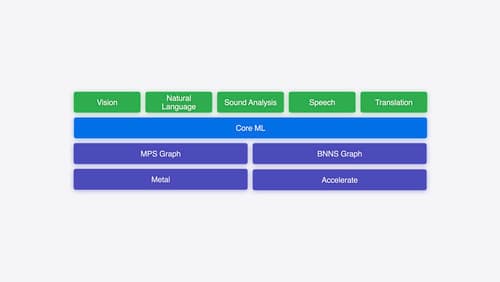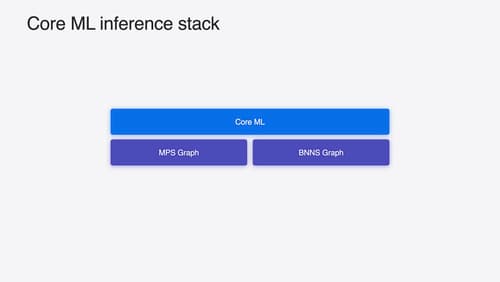Machine learning for beginners
Asked on 2024-08-08
1 search
For beginners interested in machine learning on Apple platforms, there are several sessions from WWDC that can help you get started:
-
Explore machine learning on Apple platforms: This session provides an overview of machine learning on Apple platforms, including leveraging built-in intelligence, customizing apps with ML-powered APIs, and training models using frameworks like PyTorch powered by Metal. It also covers optimizing models for Apple silicon and integrating them into apps. You can start with the Introduction and Apple Intelligence chapters.
-
What’s new in Create ML: This session introduces CreateML, a tool for creating machine learning models. It covers enhancements to CreateML, building models for object tracking, and new components for time series forecasting and classification. For beginners, the Overview chapter is a good starting point.
-
Deploy machine learning and AI models on-device with Core ML: This session focuses on integrating and running machine learning models on Apple devices using Core ML. It provides a comprehensive look at the machine learning workflow, from training to deployment. The Integration chapter is particularly relevant for beginners.
-
Support real-time ML inference on the CPU: This session introduces BNNS Graph, a new API for CPU-based machine learning, and explains how it can optimize models for real-time use cases. The Introducing BNNS Graph chapter is a good place to start.
-
Train your machine learning and AI models on Apple GPUs: This session covers training machine learning models using Apple GPUs and frameworks like TensorFlow, PyTorch, and JAX. The Training frameworks on Apple silicon chapter provides an introduction to these tools.
-
Accelerate machine learning with Metal: This session explains how to accelerate machine learning models using Metal, focusing on GPU acceleration and integration with Core ML. The Introduction chapter is a good starting point.
For a comprehensive introduction to machine learning on Apple platforms, you can start with the Explore machine learning on Apple platforms session.

Explore machine learning on Apple platforms
Get started with an overview of machine learning frameworks on Apple platforms. Whether you’re implementing your first ML model, or an ML expert, we’ll offer guidance to help you select the right framework for your app’s needs.

What’s new in Create ML
Explore updates to Create ML, including interactive data source previews and a new template for building object tracking models for visionOS apps. We’ll also cover important framework improvements, including new time-series forecasting and classification APIs.

Deploy machine learning and AI models on-device with Core ML
Learn new ways to optimize speed and memory performance when you convert and run machine learning and AI models through Core ML. We’ll cover new options for model representations, performance insights, execution, and model stitching which can be used together to create compelling and private on-device experiences.
